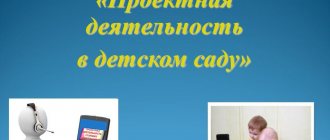Main tasks solved with the help of innovative technologies.
1.Development of children’s creative abilities, aesthetic perception of the surrounding reality. 2.Development of interest in experimenting with materials and means of representation. 3.Development of the ability to independently select materials, taking into account their inherent artistic properties, to choose means that correspond to the artistic concept.
The use of non-traditional technologies does not exclude the main tasks that the teacher sets for himself when conducting art classes.
Methodology for working with operational (technological) maps.
Operational cards allow the teacher to clearly and clearly introduce children to a new way of drawing; help children analyze what materials will be needed to perform work using a particular technique; what sequence of operations needs to be performed to achieve the desired result.
After the children have become familiar with the new technique, the operation card is placed in the center of the art. Children use it in independent activities to remember how to work with this technique. Gradually, as they become acquainted with other innovative technologies, a selection of cards is collected in the center, which allows the child to independently make a choice of techniques and materials in accordance with his idea.
Lifelong learning begins from the cradle
Web designer, data scientist, website designer - all these popular and well-paid professions simply did not exist five to seven years ago.
How to prepare for something that may not even have been thought of yet? There are two strategies:
1. Give a choice as early as possible and show that there are dozens, if not hundreds, of possibilities.
Education is no longer the monopoly of kindergartens and development schools. Children learn on their own, children learn in the family, with friends, sitting at the doctor, standing in line at the store with their mother - wherever possible. That's why they choose what they will do in life, not in 11th grade, but much earlier. Nowadays there are so many things - foreign languages, robotics, sports, dancing, all sorts of intellectual pursuits - that it is not at all necessary to stop at one thing and turn it into a career for life. Every hobby can become a profession, and maybe there will even be several of them.
2. Teach what will be useful in any profession.
For example, programming. Please note that all the examples with professions above are from the IT sector. What does it mean? This means that the phrase “computer literacy” has a different meaning. Being a simple user is no longer enough. You need to learn to program. Since the early childhood. Do not rush to angrily close the article. Let's see what programming is?
Jordan Shapiro, Ph.D., author of the bestselling book The New Childhood: How to Raise Children in the Age of Globalization, says it's just "a continuation of writing." When programming, we simply “write” some other icons. And we create other works - games, interactive tasks, animated pictures, simulations and simulators. When you can write, you can share your knowledge with the world and come up with a story that will capture the hearts and minds of other people. It's the same with programming. And the sooner a child begins to master this “language,” the easier it will be to integrate into adult reality.
How to start? From apps, of course. For example, in Kodable, kids rescue furry aliens shipwrecked on Earth and learn algorithms and object-oriented programming along the way. In ScratchJr, you can “revive” robots by connecting the corresponding blocks together: teach them to jump, run, dance and sing. The application is based on the Scratch language, which is used for real, “adult” programming. In Lightbot you need to create a number of commands so that the robot leaves the maze unharmed, and at the end of the journey, if the child has done everything correctly, funny lights on the panels will light up. Children over 5 years old can be sent to the robotics section and buy toys based on artificial intelligence. The most famous is the Codie robot. You can communicate with him using a smartphone or tablet, asking him commands.




